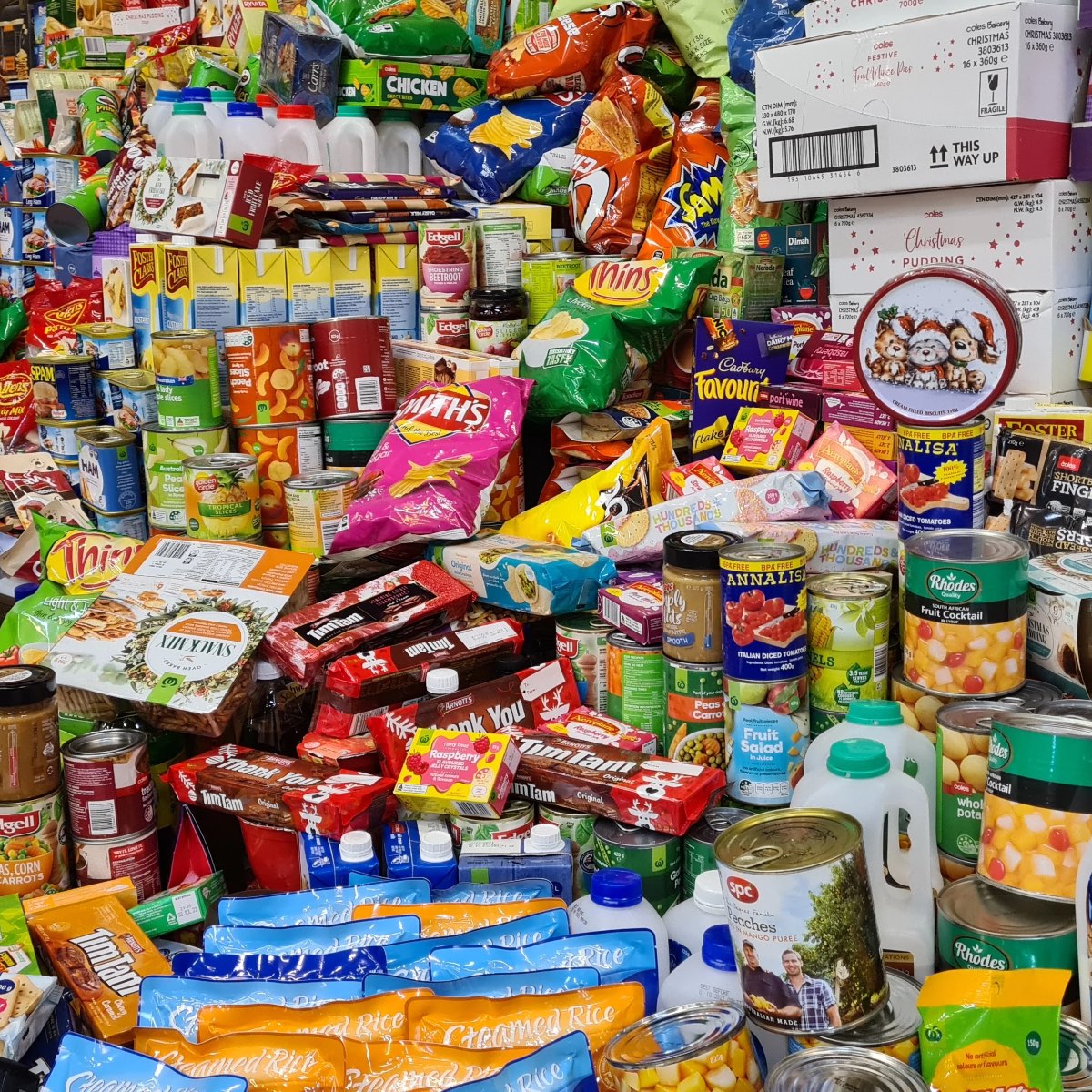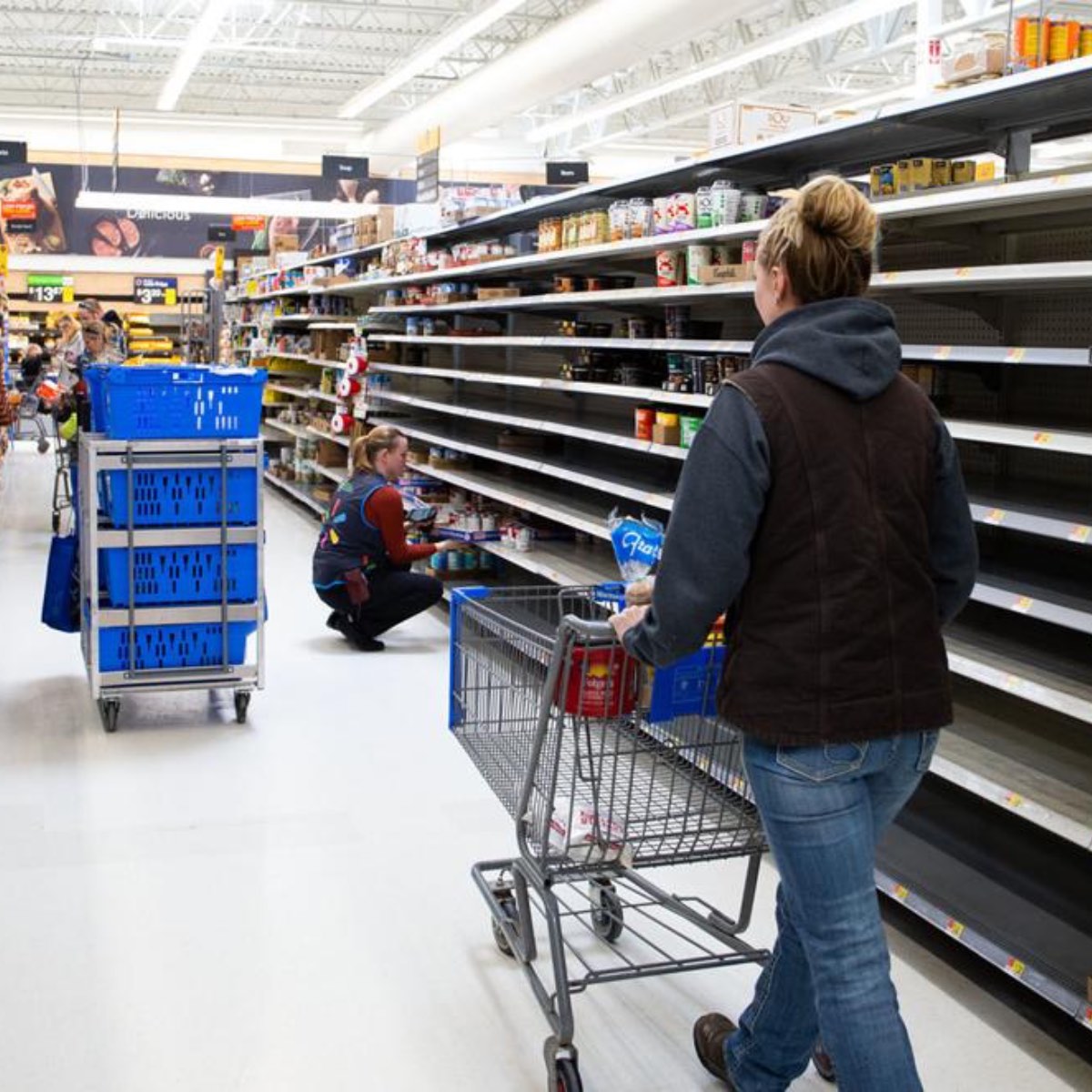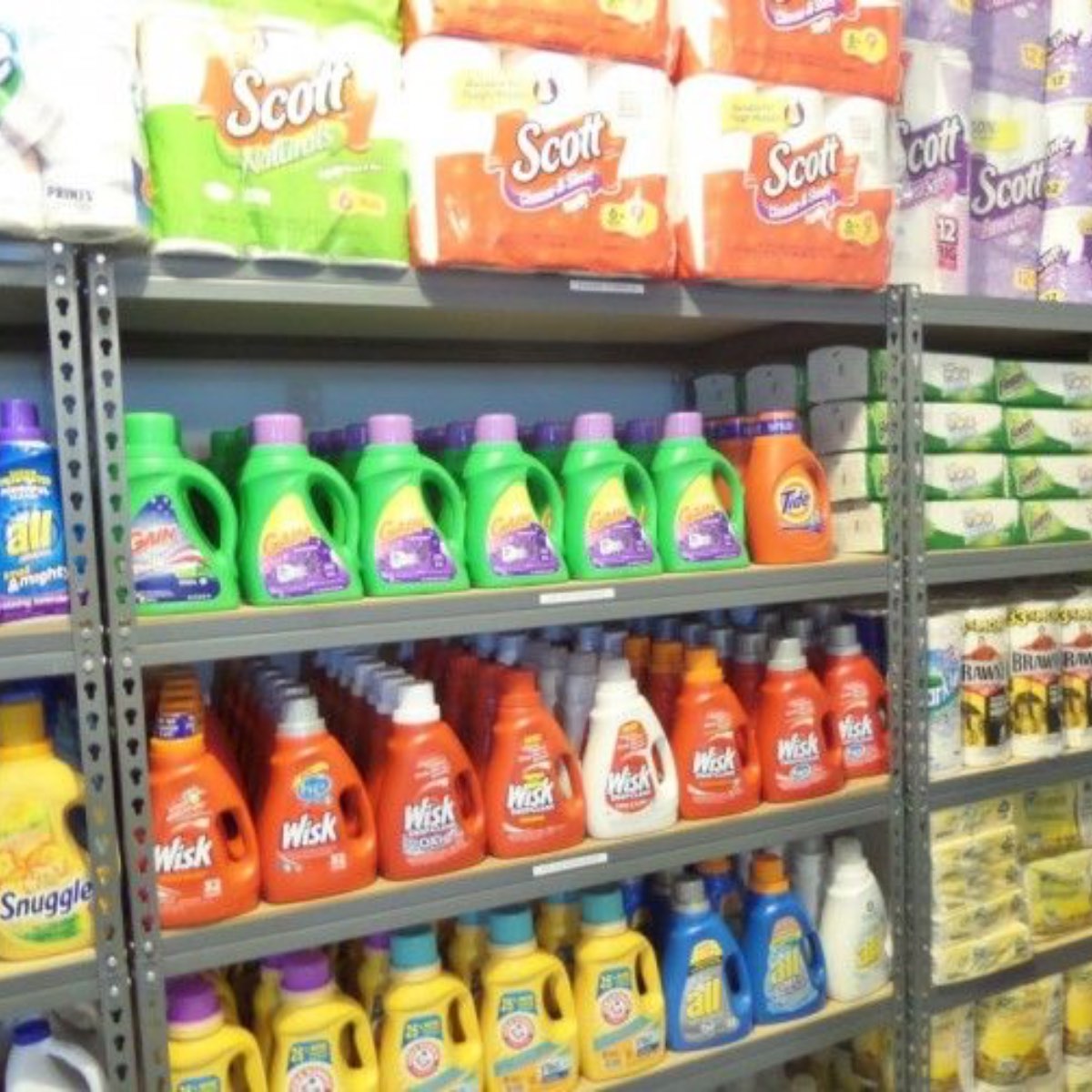In today’s unpredictable world, being prepared for unexpected events offers peace of mind and empowers you to navigate challenges. Stocking essential supplies is a cornerstone of preparedness, but with so much information available, it’s easy to overlook crucial details. This guide dives into 30 common mistakes to avoid when stockpiling supplies. From neglecting dietary needs to overlooking mental health considerations, we’ll explore missteps that can hinder your preparedness efforts. By learning from these common pitfalls, you can build a well-rounded stockpile that caters to your specific needs and ensures you’re truly ready for whatever comes your way.
30 Common Mistakes to Avoid When Stockpiling Supplies

Let us dive straight into looking at these common mistakes to avoid when stockpiling supplies.
1. Stockpiling Too Much of the Same Thing:
- Why it’s a mistake: This is the most common of mistakes to avoid when stockpiling supplies. Having a variety of supplies ensures you’re prepared for different situations. A surplus of one item might leave you lacking in another crucial area.
- How to avoid it: Create a plan that considers your needs and potential emergencies. Stockpile a variety of essentials in appropriate quantities.
2. Ignoring Shelf Life and Expiration Dates:
- Why it’s a mistake: Expired food and medication can be ineffective or even harmful. Relying on outdated supplies defeats the purpose of stockpiling.
- How to avoid it: Rotate your stock regularly, using older items first and replacing them with fresh ones. Clearly mark expiration dates on all supplies.
3. Failing to Store Supplies Properly:
- Why it’s a mistake: Improper storage can damage supplies, rendering them unusable. Food can spoil, medication lose potency, and other items degrade.
- How to avoid it: Store supplies in a cool, dry, and dark location. Invest in airtight containers for food and moisture-sensitive items. Consider using a dedicated storage area or prepping a basement or root cellar.
4. Overlooking Dietary Restrictions or Preferences:
- Why it’s a mistake: A stockpile that doesn’t cater to individual dietary needs is incomplete. You or someone in your household might have allergies, intolerances, or follow a specific diet.
- How to avoid it: Include a variety of shelf-stable foods that cater to dietary restrictions. Stock up on staples that can be prepared in different ways. Consider learning basic food preservation techniques to expand your options.
5. Neglecting Rotate and Use Policy:
- Why it’s a mistake: Without regular rotation, older supplies sit unused while fresher options are readily available. This can lead to expired items and missed opportunities to use up stock before it goes bad.
- How to avoid it: Implement a “first in, first out” (FIFO) system. Use older items before acquiring new ones. Regularly review your stockpile and rotate stock to ensure freshness.

6. Stockpiling Unfamiliar Items:
- Why it’s a mistake: If you’re unfamiliar with how to use an item, it might be useless in an emergency. Stockpiling unfamiliar items creates a learning curve when you need them most.
- How to avoid it: Focus on stockpiling items you know how to use and incorporate into your daily routine. Consider taking preparedness courses to learn new skills for utilizing unfamiliar items.
7. Not Having a Stockpiling Budget:
- Why it’s a mistake: Unplanned stockpiling can strain your finances.
- How to avoid it: Set a realistic budget for stockpiling and allocate funds regularly. Start small and gradually build your stockpile over time.
8. Overstocking One Item and Neglecting Others:
- Why it’s a mistake: Focusing on just one category of supplies creates an imbalance. A stockpile overflowing with canned goods might lack essential hygiene products or first-aid supplies.
- How to avoid it: Create a comprehensive list of essential categories like food, water, sanitation, first aid, and personal hygiene. Allocate your budget strategically to ensure a balanced stockpile.
9. Overlooking Proper Hygiene and Cleaning Supplies:
- Why it’s a mistake: Maintaining hygiene is crucial during emergencies, especially when access to running water might be limited. A lack of cleaning supplies can compromise sanitation and health.
- How to avoid it: Stockpile essential hygiene items like soap, toothpaste, toilet paper, feminine hygiene products, and cleaning supplies like disinfectant wipes, bleach, and garbage bags.
10. Hoarding Unfamiliar or Unnecessary Goods:
- Why it’s a mistake: Hoarding creates unnecessary strain on resources and takes away from those who might genuinely need them. Stockpiling unnecessary or unfamiliar items wastes valuable space and resources.
- How to avoid it: Focus on stockpiling essential items you’ll realistically use. Prioritize items with multiple uses and functionalities.
11. Neglecting to Consider Storage Space Constraints:
- Why it’s a mistake: An overflowing stockpile becomes inaccessible and difficult to manage. Underestimating storage space can lead to disorganization and wasted resources.
- How to avoid it: Be realistic about your available storage space. Utilize space-saving solutions like stackable containers and vertical storage. Regularly declutter and rotate your stockpile to maintain organization.
12. Failing to Plan for Special Needs or Medical Supplies:
- Why it’s a mistake: A one-size-fits-all approach to stockpiling overlooks individual needs. People with allergies, infants, or those requiring specific medications need a tailored plan.
- How to avoid it: Consider any special needs within your household. Stockpile necessary medical supplies, allergy medications, and infant formula if applicable. Consult your healthcare provider for guidance on storing medications.
13. Ignoring the Importance of Water Storage and Purification:
- Why it’s a mistake: Water is essential for survival. Relying solely on public water sources might be risky during emergencies.
- How to avoid it: Store a sufficient amount of bottled water for each person in your household. Consider investing in water purification tablets or a water filtration system for long-term water needs.
14. Forgetting to Include Emergency Communication Devices:
- Why it’s a mistake: Communication can be critical during emergencies. Standard phone lines might be down, and relying solely on cell phones might not be reliable.
- How to avoid it: Include a battery-powered radio, a crank phone, or a satellite messenger in your stockpile. Having multiple communication options increases your chances of staying connected during emergencies.

15. Not Considering Seasonal or Climate-Specific Needs:
- Why it’s a mistake: A stockpile designed for one climate might not be suitable for another. For example, a stockpile lacking warm clothing wouldn’t be helpful in a winter emergency.
- How to avoid it: Tailor your stockpile to your specific climate and potential seasonal emergencies. Include items like warm clothing, blankets, or cooling supplies depending on your location.
16. Neglecting Pet Supplies if You Have Pets:
- Why it’s a mistake: Pets are part of the family and require preparation during emergencies. Leaving their needs out of your plan can cause undue stress and strain on resources.
- How to avoid it: Stockpile pet food, water, medication, and essential supplies like leashes, crates, and waste disposal bags for your furry companions.
17. Overlooking the Importance of Security Measures for Supplies:
- Why it’s a mistake: A well-stocked stockpile can become a target for theft or looting during emergencies.
- How to avoid it: Consider implementing security measures like secure storage containers, locks, or even a designated storage space outside your primary living area. Be discreet about the extent of your stockpile.
18. Relying Solely on Non-Perishable Foods:
- Why it’s a mistake: A stockpile solely reliant on non-perishable food can be monotonous and lack essential nutrients.
- How to avoid it: While non-perishables are crucial, consider incorporating some shelf-stable foods with a longer lifespan like canned fruits and vegetables, dried beans, and grains. Learn basic food preservation techniques like canning or dehydrating to add variety and nutritious options to your stockpile.
19. Ignoring the Need for Cooking or Heating Methods:
- Why it’s a mistake: Non-perishable food often requires cooking. Without a way to prepare meals, your stockpile becomes less versatile, especially in prolonged emergencies.
- How to avoid it: Include a camp stove, portable grill, or fire starters in your stockpile. Consider alternative cooking methods like solar ovens or rocket stoves. Stockpile fuel for these appliances if necessary.
20. Failing to Include Tools and Equipment for Survival Tasks:
- Why it’s a mistake: Even basic tools can be crucial during emergencies. You might need to perform repairs, build a shelter, or complete other essential tasks.
- How to avoid it: Stockpile a basic toolkit with essential tools like hammers, screwdrivers, pliers, duct tape, and a multi-purpose tool. Consider including a shovel, flashlight, and other survival-oriented tools based on your needs.
21. Overlooking the Importance of Mental Health Items (Books, Games, etc.)
- Why it’s a mistake: Emergencies can be stressful and isolating. Neglecting mental well-being can negatively impact morale and decision-making.
- How to avoid it: Include books, games, puzzles, or other forms of entertainment in your stockpile. These can provide relaxation, reduce boredom, and help maintain a positive mental state during challenging times.
22. Neglecting to Include Personal Documents and Identification:
- Why it’s a mistake: Important documents like passports, birth certificates, and insurance information might be crucial during emergencies.
- How to avoid it: Create waterproof copies of essential documents and store them securely in your stockpile. Consider a fireproof document safe for added protection.
23. Not Having a Plan for Waste Management and Sanitation:
- Why it’s a mistake: Proper waste disposal is essential for hygiene and sanitation, especially in confined spaces. A lack of planning can lead to health risks and unpleasant living conditions.
- How to avoid it: Include garbage bags, sanitation wipes, and a plan for waste disposal in your stockpile. Consider composting options or designated waste storage solutions.
24. Ignoring the Need for First Aid and Medical Equipment:
- Why it’s a mistake: Minor injuries and illnesses are still a concern during emergencies.
- How to avoid it: Assemble a well-stocked first-aid kit with essential medical supplies like bandages, pain relievers, antiseptics, and any necessary medications. Consider taking a first-aid course to be prepared for handling medical emergencies.
25. Failing to Include Backup Power Sources (Generators, Solar Panels, etc.)
- Why it’s a mistake: Power outages are common during emergencies. Relying solely on grid power can leave you without essential appliances or communication devices.
- How to avoid it: Consider including a backup power source like a portable generator or solar panels with a battery bank in your stockpile. This can ensure access to electricity for vital equipment.
26. Overlooking the Importance of Cash Reserves in Case of Emergency:
- Why it’s a mistake: During emergencies, electronic transactions might not be reliable. Having cash on hand can be crucial for purchasing essential supplies or services not readily available through barter.
- How to avoid it: Set aside a reasonable amount of cash as part of your stockpile. Store it securely in a waterproof and fireproof container.
27. Not Considering the Needs of Vulnerable Family Members (Children, Elderly, etc.)
- Why it’s a mistake: A one-size-fits-all stockpile might not cater to the specific needs of vulnerable family members. Children, elderly individuals, or those with disabilities might require additional considerations.
- How to avoid it: Stockpile essential items tailored to each family member’s needs. Include formula, diapers, comfort items for children, or adult incontinence supplies if necessary. Plan for medications and ensure accessibility for those with physical limitations.
28. Neglecting to Plan for Transportation Needs in Case of Evacuation:
- Why it’s a mistake: An emergency might necessitate evacuation. Without a transportation plan, you might be stranded or unable to leave quickly.
- How to avoid it: Maintain a reliable vehicle and ensure it’s properly maintained. Consider alternative transportation options like bicycles or having a fuel plan in place for your vehicle. If evacuation by car isn’t feasible, plan alternative routes or gathering points.
29. Ignoring Local Laws and Regulations Regarding Stockpiling and Storage:
- Why it’s a mistake: Some regions might have limitations on certain items you can stockpile or specific storage regulations. Violating these regulations can lead to fines or confiscation of supplies.
- How to avoid it: Familiarize yourself with local laws and regulations regarding stockpiling and storage of specific items. Adhere to limitations on quantities or hazardous materials to ensure compliance.
30. Overlooking the Importance of Community and Networking for Support:
- Why it’s a mistake: Emergencies can be isolating experiences. Relying solely on your own stockpile might not be enough in the long run. Building a network of support within your community can be invaluable.
- How to avoid it: Consider building relationships with neighbors or forming a preparedness group. Share resources, skills, and knowledge to create a more resilient support system. Remember, cooperation and community can be powerful assets during challenging times.
Mistakes to Avoid When Stockpiling Supplies Conclusion
By learning these mistakes to avoid when stockpiling supplies you’ll be well on your way to building a comprehensive and effective stockpile. Remember, preparedness is an ongoing process. Regularly review and update your supplies, stay informed about potential threats, and don’t be afraid to adapt your plan as needed.
Most importantly, stockpile with a purpose. It’s not about creating a doomsday bunker, but about empowering yourself and your loved ones to face challenges with confidence. By taking a proactive approach, you can navigate disruptions and emergencies with resilience, ensuring the well-being of yourself and those who matter most. So, learn from these mistakes, tailor your stockpile to your specific needs, and embrace the peace of mind that comes with preparedness.
Take a look at more prepper articles.
